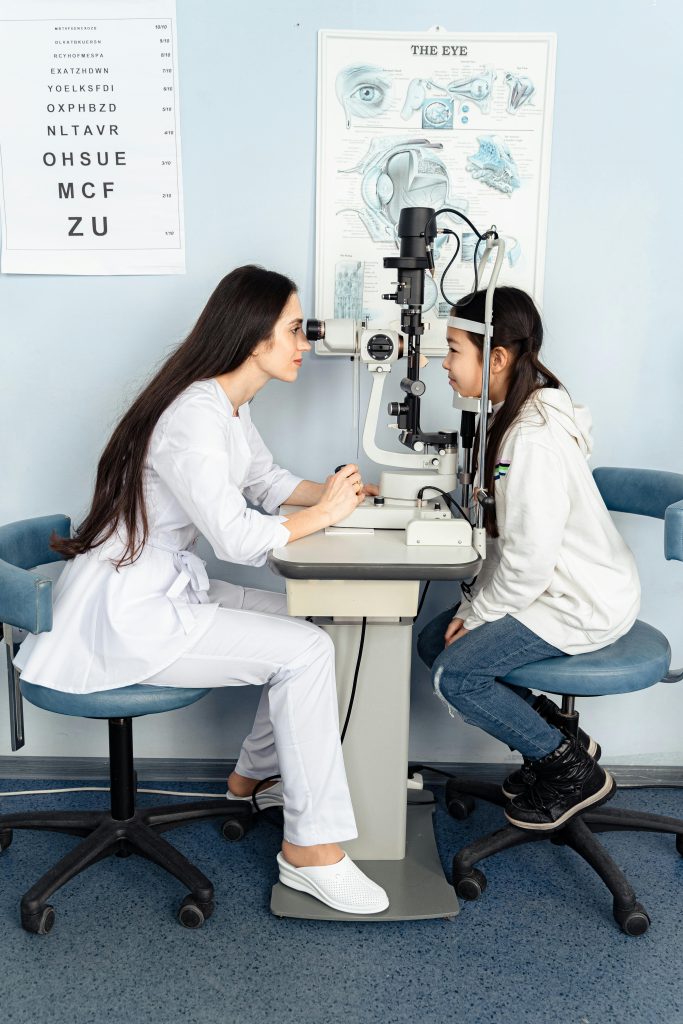The child eyesight plays a fundamental role in their learning and overall development. Clear vision is essential for reading, writing, recognizing objects, and engaging in classroom activities. From this post you can get concpt of child eyesight.

Table of Content
- The Importance of Child Eyesight in Learning
- Common Child Eyesight Problems
- Signs of Child Eyesight Problems
- How Parents Can Support Their Child Eyesight and Learning
- Conclusion on Child Eyesight
The child eyesight plays a fundamental role in their learning and overall development. Clear vision is essential for reading, writing, recognizing objects, and engaging in classroom activities. Eyesight is a vital factor that impacts on confidence of a child. Lack of eyesight brings academic challenges and social problems. Understanding the impact of vision on learning and ensuring regular eye care is crucial for a child’s success.
The Importance of Child Eyesight in Learning
Children rely on their eyesight for about 80% of their learning. Capability of vision are related to many areas such as:
- Reading and Writing
Child Eyesight helps children track words on a page, recognize letters, and understand text. If a child struggles to see clearly, reading and writing can become frustrating and tiring.
- Classroom Learning
Students need to see the board, follow along in books, and observe demonstrations. Poor child eyesight can make it difficult for them to keep up with lessons and participate in class.
- Hand-Eye Coordination
Activities like drawing, puzzles, and playing sports require good vision to develop fine and gross motor skills. Weak eyesight can lead to clumsiness and difficulty with physical tasks.
- Attention and Focus
Children with vision problems may struggle to concentrate, leading to misdiagnosis of attention disorders like ADHD. Blurry vision can cause headaches, eye strain, and frequent distractions.
Common Child Eyesight Problems
Several vision issues can affect a child’s learning experience, including:
- Nearsightedness (Myopia)
Children with myopia can see objects close up clearly but struggle with distant objects, such as the board in a classroom.
- Farsightedness (Hyperopia)
Hyperopia makes it difficult to see objects up close, which can affect reading and close-up activities.
- Astigmatism
This condition leads to blurred vision at all distances, making reading and writing difficult.
- Strabismus (Crossed Eyes)
Misalignment of the eyes can affect depth perception and coordination, making it hard for a child to focus.
- Amblyopia (Lazy Eye)
One eye is weaker than the other, causing poor vision development and potential learning difficulties.
Signs of Child Eyesight Problems
Parents and teachers should watch for signs that a child may have vision issues, including:
- Squinting or tilting the head while reading
- Frequent eye rubbing
- Complaints of headaches or eye strain
- Holding books or screens too close
- Difficulty following along with reading
- Short attention span or avoidance of reading
- Poor performance in school despite effort
How Parents Can Support Their Child Eyesight and Learning
- Schedule Regular Eye Exams
Vison related learning problems can be prevented through early detection. Children should have their first eye exam by age 3 and regular checkups throughout school.
- Ensure Proper Lighting and Screen Time Management
Good lighting while reading and limiting screen time can reduce eye strain and protect vision.
- Encourage Outdoor Activities
Spending time outdoors helps prevent myopia progression and supports healthy eye development.
- Provide Nutritious Foods for Eye Health
Vision related nutrient should be taken. Thus, diet should have rich in vitamins A, C, and E, as well as omega-3 fatty acids. The foods which contain that sort of elements like carrots, leafy greens, and fish are beneficial.
- Monitor Their Academic Performance and Behavior
If a child is struggling in school, vision issues should be considered as a possible cause before assuming learning disabilities.
- Ensure Proper Posture and Reading Habits
Encouraging children to sit at a comfortable distance from books and screens helps reduce strain on their eyes. If you need more information Click here.
Conclusion on Child Eyesight
Clear vision is one of the most essential factors that enhance a child’s learning and academic success. Parents and educators must be proactive in identifying and addressing vision problems early. Regular eye checkups, healthy habits, and a supportive learning environment can help ensure that children reach their full potential without unnecessary obstacles due to poor eyesight. If you require more information Click here.
Pingback: Alluring Relation Between Vision and Motor Development 2025 - ECD Explorer